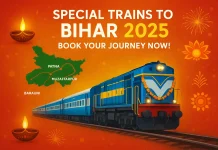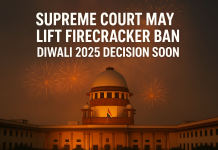The Maha Kumbh Mela, the world’s largest spiritual gathering, is a mesmerizing confluence of faith, culture, and tradition. Celebrated every 12 years, the Maha Kumbh Mela in 2025 will take place in Prayagraj, Uttar Pradesh, at the sacred Triveni Sangam, the confluence of the holy rivers Ganga, Yamuna, and the mythical Saraswati. This grand event promises a transformative experience for millions of pilgrims, sages, and travelers from around the globe.
This blog takes you through the spiritual, cultural, and logistical aspects of visiting the Maha Kumbh Mela in 2025. From its historical significance to practical tips for travelers, here’s everything you need to know about this once-in-a-lifetime event.
A Journey into the Past: The Significance of Maha Kumbh Mela
The Maha Kumbh Mela is deeply rooted in Hindu mythology and spirituality. According to ancient legends, the origin of the Kumbh Mela dates back to a cosmic battle between the gods (Devas) and demons (Asuras) for the pot of nectar (Amrit) that emerged during the churning of the ocean (Samudra Manthan). During the battle, drops of nectar spilled at four locations: Prayagraj, Haridwar, Ujjain, and Nashik, making them sacred.
The Maha Kumbh Mela is celebrated at each location in a cyclical pattern, with Prayagraj hosting the grandest version every 12 years. The event is marked by Shahi Snans (royal baths) in the holy rivers and it is believed to cleanse sins and grant liberation (moksha).
Highlights of Maha Kumbh Mela 2025
- Shahi Snans: The most auspicious aspect of the Kumbh Mela is the Shahi Snan, when revered saints and sadhus from various sects, including Naga sadhus, take ceremonial dips in the Triveni Sangam. The Shahi Snans for Maha Kumbh Mela 2025 are scheduled on specific dates according to astrological alignments.
- Akhadas and Sadhus: The Mela showcases India’s diverse spiritual traditions through the Akhadas (religious organizations) and their ascetics. Witnessing Naga sadhus, who renounce worldly life, is an experience in itself.
- Spiritual Discourses and Yagyas: The event is a hub of spiritual enlightenment, featuring discourses, meditation sessions, and yajnas (fire rituals) led by esteemed gurus and scholars.
- Cultural Extravaganza: The Mela also offers a rich cultural experience, including folk performances, devotional music, and art exhibitions that reflect India’s heritage.
- Sangam Darshan: The confluence of the Ganga, Yamuna, and Saraswati is a spiritual magnet for pilgrims. Taking a dip here is believed to purify the soul.
Practical Guide to Maha Kumbh Mela 2025
1. Getting There
- By Air: The nearest airport to Prayagraj is Bamrauli Airport, which connects to major Indian cities. Alternatively, travelers can fly to Lucknow or Varanasi and take a train or bus to Prayagraj.
- By Train: Prayagraj Junction is a major railway hub. Special trains and increased services will likely be operational during the Mela.
- By Road: The city is well-connected via national highways. State-run and private buses ply regularly to Prayagraj.
2. Accommodation Options
- Tent Cities: Large tent cities are set up near the Mela site, offering basic to luxury accommodations. These tents often include amenities like meals, hot water, and guided tours.
- Hotels and Guesthouses: Prayagraj has a range of accommodations, from budget hotels to luxury stays. Booking well in advance is highly recommended.
- Dharamshalas and Ashrams: Many pilgrims opt for low-cost lodging in Dharamshala or ashrams, which provide basic amenities and spiritual ambiance.
3. What to Pack
- Clothing: Pack modest, comfortable, and weather-appropriate clothing. Carry woolens if visiting during winter.
- Footwear: Comfortable, water-resistant footwear is essential for navigating the sandy terrain.
- Essentials: Bring a reusable water bottle, personal hygiene items, a flashlight, and a first aid kit.
- Documentation: Keep a copy of your ID, travel documents, and Mela pass (if required).
4. Safety and Health Tips
- Stay Hydrated: Carry bottled water to stay hydrated, especially if you’re walking long distances.
- Follow Guidelines: Adhere to the safety protocols and crowd management measures implemented by the authorities.
- Medical Assistance: Temporary medical camps are set up at the site. Familiarize yourself with their locations.
- Beware of Scams: Be cautious of touts and unauthorized guides.
5. Best Time to Visit
While the Mela lasts several weeks, the Shahi Snan days are the most significant and crowded. If you prefer a less crowded experience, plan your visit on non-Snan days. The weather in January and February is usually pleasant, making it ideal for exploration.
Immersing in the Experience
Visiting the Maha Kumbh Mela is not just about being a spectator; it’s about immersing yourself in the spiritual and cultural ambiance. Here are some activities to make your visit unforgettable:
1. Take a Holy Dip
Begin your day with a dip at the Triveni Sangam. It’s believed to wash away sins and provide a sense of renewal.
2. Interact with Sadhus
Engage with sadhus and saints to gain insights into their philosophies and practices. Many are open to sharing their wisdom with genuine seekers.
3. Explore the Mela Grounds
Wander through the sprawling Mela grounds to discover stalls selling spiritual books, artifacts, Ayurvedic remedies, and traditional snacks.
4. Attend Cultural Programs
Participate in cultural events to witness the vibrant folk traditions of India. These programs include music, dance, and storytelling.
5. Capture the Moments
Bring a camera to document the vibrant colors, diverse people, and unique moments that define the Mela. Be respectful while photographing sadhus and pilgrims.
Challenges and Rewards
Challenges
- Crowds: The sheer number of people can be overwhelming. Be patient and follow crowd control measures.
- Logistics: Accommodations and transport can be challenging to secure without prior planning.
- Weather: Be prepared for cold mornings and nights, especially if staying in tents.
Rewards
- Spiritual Upliftment: The Mela offers a chance to connect with your spiritual self and experience profound peace.
- Cultural Immersion: Witnessing India’s rich traditions and vibrant diversity is a reward in itself.
- Lifetime Memories: The Maha Kumbh Mela is a once-in-a-lifetime experience that stays etched in your heart forever.
Conclusion
The Maha Kumbh Mela 2025 is more than an event; it’s a spiritual odyssey that transcends religion and geography. Whether you are a pilgrim seeking moksha, a traveler exploring India’s culture, or a photographer capturing human emotions, the Kumbh Mela offers something for everyone.
Prepare yourself for a journey that promises to be life-changing. Book your tickets, pack your bags, and set forth on this incredible adventure to experience the divine at the Maha Kumbh Mela 2025.
Frequently Asked Questions (FAQ) About Maha Kumbh Mela 2025
Here’s a comprehensive FAQ to help you prepare for your visit to the Maha Kumbh Mela 2025:
1. What is the Maha Kumbh Mela?
The Maha Kumbh Mela is a major Hindu pilgrimage and spiritual gathering held every 12 years at Prayagraj (formerly Allahabad), Uttar Pradesh. It is celebrated at the confluence of the Ganga, Yamuna, and Saraswati rivers and is considered the largest religious gathering in the world.
2. What are the key dates for Maha Kumbh Mela 2025?
The Maha Kumbh Mela will begin in January 2025 and continue until March 2025. The exact dates of key events like the Shahi Snans (royal baths) are determined by astrological calculations and will be announced closer to the event.
3. Where is the event held?
The Maha Kumbh Mela 2025 will take place in Prayagraj, Uttar Pradesh, at the Triveni Sangam, the confluence of the Ganga, Yamuna, and Saraswati rivers.
4. Why is the Maha Kumbh Mela celebrated?
The Kumbh Mela commemorates the legend of the Samudra Manthan (churning of the ocean) when drops of nectar (Amrit) fell at four sacred locations: Prayagraj, Haridwar, Ujjain, and Nashik. The event is celebrated to cleanse one’s sins and attain spiritual liberation (moksha).
5. How do I reach Prayagraj?
- By Air: The nearest airport is Prayagraj’s Bamrauli Airport. Flights from major cities like Delhi, Mumbai, and Kolkata operate here. Lucknow and Varanasi airports are alternatives.
- By Train: Prayagraj Junction is a major railway station with trains from all over India. Additional trains are arranged during the Mela.
- By Road: Prayagraj is connected via highways to cities like Delhi, Lucknow, and Varanasi. State-run and private buses are available.
6. What types of accommodation are available?
- Tent Cities: Temporary camps offering facilities ranging from basic to luxury accommodations.
- Hotels and Lodges: A variety of hotels and lodges cater to different budgets.
- Dharamshalas and Ashrams: Economical options for pilgrims, providing simple amenities.
- Private Rentals: Home-stays and private accommodations may also be available, but early booking is recommended.
7. Is the event safe for solo travelers?
Yes, the Maha Kumbh Mela is generally safe, but the large crowds require caution. Follow safety guidelines, stay in well-lit areas, and avoid carrying large amounts of cash or valuables.
8. Can foreigners attend the Maha Kumbh Mela?
Absolutely! The Maha Kumbh Mela is open to people from all backgrounds. Many international visitors attend to experience India’s culture and spirituality.
9. What should I pack for the event?
- Comfortable clothing suitable for the weather.
- Sturdy footwear for walking on uneven terrain.
- Reusable water bottles, snacks, and personal hygiene items.
- ID documents, emergency contacts, and a small first-aid kit.
- A flashlight and portable phone charger.
10. What are the highlights of the Maha Kumbh Mela?
- Shahi Snans: Royal baths by saints and sadhus at the Sangam.
- Spiritual Discourses: Sessions by gurus and scholars.
- Cultural Programs: Folk music, dance, and devotional performances.
- Akhadas and Sadhus: Unique traditions of various ascetic orders.
- Holy Dip at Sangam: Taking a dip in the Triveni Sangam to cleanse sins.
11. Are there special passes or registrations required?
Certain areas of the Mela, like Shahi Snan zones, may require special passes. Online registration for accommodations and events might also be necessary. Keep an eye on official announcements for updates.
12. What are the safety measures in place?
- Crowd Management: Authorities deploy personnel to manage the large crowds.
- Medical Facilities: Temporary medical camps and ambulances are stationed.
- Surveillance: CCTV cameras and drones monitor the Mela grounds.
- Emergency Services: Helplines and information centers are available.
13. How can I participate in a Shahi Snan?
The Shahi Snans are primarily for saints and members of Akhadas. Pilgrims can bathe in the Sangam during designated times but may not participate in the formal Shahi Snan procession.
14. Are there facilities for elderly or disabled visitors?
Yes, provisions such as wheelchair access, special bathing areas, and medical assistance are available for elderly and disabled visitors.
15. What food options are available?
The Mela grounds host food stalls serving vegetarian meals, including traditional Indian cuisine. Langars (community kitchens) organized by religious groups provide free meals to pilgrims.
16. Is photography allowed?
Photography is permitted, but be respectful while capturing images of sadhus, rituals, or pilgrims. Some individuals or ceremonies may not allow photos.
17. What cultural experiences should I not miss?
- Witnessing the Shahi Snans and the processions of saints.
- Interacting with sadhus and learning about their ascetic lifestyles.
- Attending spiritual discourses and yajnas (fire rituals).
- Exploring cultural programs like folk performances and devotional music.
18. What are the weather conditions during the Mela?
The Maha Kumbh Mela usually occurs during winter. Expect cool mornings and evenings, with daytime temperatures ranging from 10°C to 25°C (50°F to 77°F). Pack accordingly.
19. Can I combine my visit with nearby attractions?
Yes! Consider exploring:
- Varanasi: Known for the Ganga Aarti and ancient temples.
- Chitrakoot: A serene town with links to the Ramayana.
- Lucknow: Famous for its Nawabi culture and cuisine.
20. How do I stay updated about the event?
Follow official government websites, apps, and social media handles for the latest updates on schedules, events, and safety guidelines.
The Maha Kumbh Mela 2025 promises to be a spiritual and cultural marvel. With proper planning, your visit can be a safe and transformative experience.































